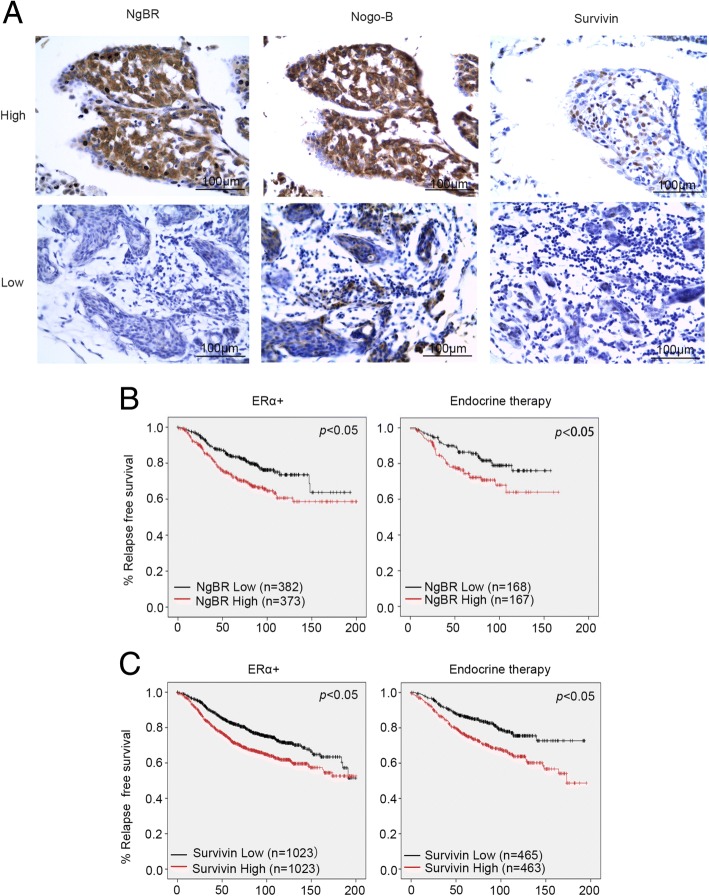Fig. 7.
Higher expression of Nogo-B receptor (NgBR) is associated with poor outcome in patients with estrogen receptor alpha (ERα) positive breast cancer. a Immunohistocheical (IHC) staining of NgBR, Nogo-B and survivin in 22 samples of breast cancer tissue. Images were taken using an Olympus microscope with × 20 lens. Scale bar 100 μm. b Relapse-free survival (RFS) in patients with ERα-positive breast cancer or endocrine therapy-treated patients. NgBR (NUS1) mRNA expression data were retrieved from a gene-expression profiling dataset (225071_x from Kaplan–Meier Plot database) of 755 cases of ERα-positive breast cancer and 335 patients with ERα-positive breast cancer treated with endocrine therapy. Kaplan–Meier analysis revealed significantly reduced RFS (p < 0.05) in 373 patients with ERα-positive breast cancer with high NgBR expression in tumors as compared to 382 patients with low NgBR expression in tumors. Similarly, RFS in patients with ERα-positive breast cancer treated with endocrine therapy is significantly decreased in 167 patients with high NgBR expression in tumors as compared to 168 patients with low NgBR expression in tumors (p < 0.05). c RFS in patients with ERα-positive breast cancer or endocrine therapy-treated patients. Survivin (BIRC5) mRNA expression data were retrieved from a gene-expression profiling dataset (202094_x from Kaplan–Meier Plot database) of 2046 cases of ERα-positive breast cancer and 928 patients with ERα-positive breast cancer treated with endocrine therapy. Kaplan–Meier analysis revealed significantly reduced RFS (p < 0.05) in 1023 patients with ERα-positive breast cancer with high survivin expression in tumors as compared to 1023 patients with low survivin expression in tumors. Similarly, RFS in patients with ERα-positive breast cancer treated with endocrine therapy is significantly decreased in 463 patients with high survivin expression in tumors as compared to 465 patients with low NgBR expression in tumors (p < 0.05)

